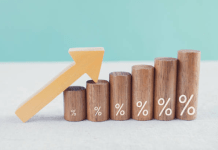If you’re like most people, you’d probably never expected to find yourself in a position where you can no longer meet your basic financial obligations. Unfortunately, the recent economic downturn and growing levels of debt across the country have hit millions of people hard in recent years, leading many of them to consider filing for bankruptcy as a solution. In fact, you may be wondering if bankruptcy rates are increasing in the United States. In this article from the Law Office of Allan E. Dunaway, we’ll explore this topic to help you better understand what’s happening and how it may impact you.
Table of Contents
Reasons for Bankruptcy Filing
Before we dive into the numbers, it’s essential to understand why people file for bankruptcy. The most common reasons are job loss, unexpected illness or injury, divorce, and other significant life changes that result in a loss of income or unmanageable debt. Fortunately, bankruptcy offers a powerful tool that can help people get back on their feet by providing a fresh start. But has this become more common in recent years?
Bankruptcy Rates in the United States
The short answer is yes – bankruptcy rates have been on the rise in recent years. According to data from the Administrative Office of the United States Courts, bankruptcy filings increased from 486,347 in 2015 to more than 770,000 in 2019. That represents a 58% increase in just four years! The COVID-19 pandemic has likely contributed to this trend, as many people have lost their jobs or suffered other financial challenges due to the pandemic’s impact on the economy.
Types of Bankruptcy Filings
There are two types of bankruptcy filings for consumers: Chapter 7 and Chapter 13. Chapter 7 is the most straightforward and fastest way to eliminate unsecured debts, such as credit card debt or medical bills. Meanwhile, Chapter 13 involves a payment plan that helps debtors reorganize their finances and pay off their debts over time. Interestingly, data from the United States Courts suggests that Chapter 7 filings are the most common, accounting for roughly two-thirds of all consumer bankruptcy filings.
The Impact of Bankruptcy on Credit Scores
Filing for bankruptcy can have a significant impact on your credit score, which is why it’s essential to understand the potential consequences before you choose this option. Typically, individual’s credit score can drop by 100 to 200 points after filing for bankruptcy, making it more challenging and costly to obtain credit in the future. However, bankruptcy can also provide a fresh start by discharging debts and helping you get your finances back on track.
In conclusion, bankruptcy rates have been on the rise in the United States, and it’s likely due to a combination of factors such as economic downturns, rising levels of debt, and the COVID-19 pandemic’s financial impacts. A better understanding of the reasons for bankruptcy filings and the different types of bankruptcy proceedings can help you make informed decisions about your financial future. If you’re considering filing for bankruptcy or facing significant debt, it’s always a good idea to consult with a qualified bankruptcy attorney and explore all your options. Remember, there’s always hope for a fresh start to get your finances back on track.








